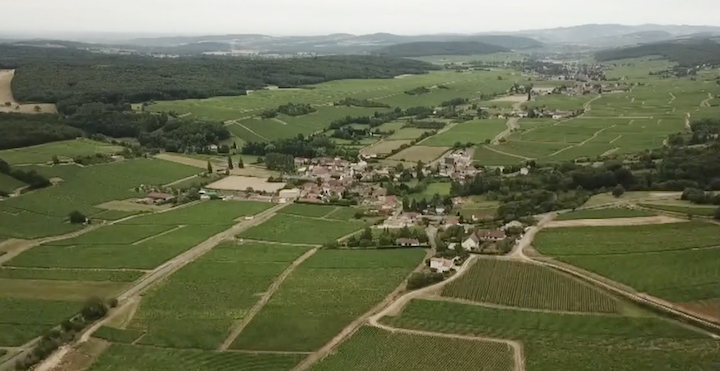By going to the ministry’s website: georisques.gouv, you enter your address and you obtain the file of all the old, polluted, or potentially polluted industrial sites, near you.

The problem with this site is that the data is incomplete and difficult to understand. There is an inventory of industrial sites at risk, but it is not always precisely indicated whether they are really polluted or not, and even less whether they involve a risk or not for our health. A Senate report even pointed out this shortcoming and no one can see the big picture. However, there are potentially polluted sites.
What can we find on these sites?
In France, by cross-checking the data, the soils are mainly polluted by heavy metals (cadmium, arsenic, copper, nickel, etc.), then by hydrocarbons and their derivatives such as chlorinated solvents, and far behind by various and varied pesticides. (roughly the same as those used in agriculture) and benzene derivatives.

Soil pollution from agricultural sources
Agricultural soils are largely forgotten, even though they can be heavily loaded, as the Monde en Face survey reveals in Brittany. Agricultural soils can also be contaminated with heavy metals like industrial soils. For example cadmium, systematically found in bags of phosphate fertilizers. This is the reason why the North and Belgium, which are highly phosphated, are full of cadmium.
In Brittany, there is more zinc and copper, because it is the diet of pigs. These two heavy metals are added to the food intake.
However, as the pig assimilates them very badly, these two heavy metals are found in the droppings, and then in the manure, spread on fields of corn… which is eaten by the pigs. The concentration of zinc and copper increases year after year in Breton soils.
Pesticides are also very present. A French study published in November showed that among 180 samples of rural soils (fields, hedges, groves, meadows, etc.), 100% were contaminated by at least 1 pesticide. Worse, 92% of earthworms were also, especially by a neonicotinoid.
Researchers believe that this pollution can alter the entire chain of degradation of organic matter, which produces soil fertility, of which earthworms are one of the strong links.
Industrial-agricultural pollution, what risks?
- For pesticides in soils, the rates are low (unrelated to direct exposure of farmers during spraying).
- For heavy metals, on the other hand, the toxicology is well known.
There are dangers of asbestos pollution and the risk of mesothelioma, a rare cancer of the pleura and peritoneum. Small-dose contamination can have repercussions over many years. Cadmium is perhaps the worst of the heavy metals because it is very toxic, for the kidneys and the bones which soften in particular, but it is very widespread, and often associated with zinc, a much more common element, which passes easily in the body because it is found naturally in our cells. Zinc is not very toxic, but it makes cadmium even more toxic.
Arsenic is also problematic, it is the case of the pollution which strikes the valley of Orbiel, in the Aude, where for decades, gold has been extracted with arsenic. Soil pollution which has spread to rivers and the water table and which exploded during the floods of October 2018. When the water stirs up the earth and the mud, it makes available again the pollutants that were hidden.
In the past, an estimated 70 gold factory workers died from arsenic-related cancers. Arsenic is very toxic to the skin and the lungs. Today, about thirty children have rates well above health standards, there are many other examples.
How do we get infected?
In polluted areas, it is often through vegetables that people become contaminated: carrots, lettuce and spinach accumulate cadmium. Cabbages are not bothered by nickel, corn is not bothered by zinc, and beets love copper. By eating these vegetables, people contaminate themselves… while decontaminating the soil.
On the other hand, potatoes and leeks hate heavy metals, so if they don’t grow, you have to be wary.
People are also contaminated by dust blown by the wind, and by particles of soil carried home under shoes. There is water from rivers and groundwater as well which end up being contaminated, because the soil is moving all the time because of the animals constantly stirring it up and pollutants circulating.
How to get rid of these pollutants?
There are the expensive engineering techniques for stripping floors, cleaning them, and replenishing soil instead.
Even on very polluted soils like slag heaps or in brownfields it grows. Plants accumulate heavy metals and in this way decontaminate the soil. You have to cut them and put them in a special landfill or incineration and wait for this to grow back and cut again and again.
After 50 years, on a former industrial wasteland, you will be able to grow a building on suitable soil … but perhaps not vegetables. This is called phytoremediation, it costs nothing, but it takes time.

Another major source of heavy metals that fall on soils is the cremation of the dead, 4% of the mercury comes from there. The body contains up to 5% of metals in our body, in our cells, in our jewelry, our prostheses… and especially our dental amalgam.
So make sure beforehand that your future crematorium is well equipped with anti-mercury filters. On the other hand, with or without a filter, do not smoke because in terms of exposure to risk, a cigarette is a good big industrial floor, well polluted by itself!
 Cherry tomatoes contaminated with salmonella: 92 sick and 1 dead
Cherry tomatoes contaminated with salmonella: 92 sick and 1 dead  A better coaching method can make a person grow
A better coaching method can make a person grow  What is the method to prevent diabetes in children?
What is the method to prevent diabetes in children?  What are the effective factors in causing stomach ulcers?
What are the effective factors in causing stomach ulcers?  Why do embarrassing memories seem to appear at night?
Why do embarrassing memories seem to appear at night?  The amazing link between SARS-CoV-2 infection and newly started diabetes
The amazing link between SARS-CoV-2 infection and newly started diabetes  WHO says monkey pox is not a global emergency right now
WHO says monkey pox is not a global emergency right now  Single cell RNA sequencing uncovers new mechanisms of heart disease
Single cell RNA sequencing uncovers new mechanisms of heart disease  Hepatitis of unknown origin: 3 new deaths and 228 cases worldwide
Hepatitis of unknown origin: 3 new deaths and 228 cases worldwide 